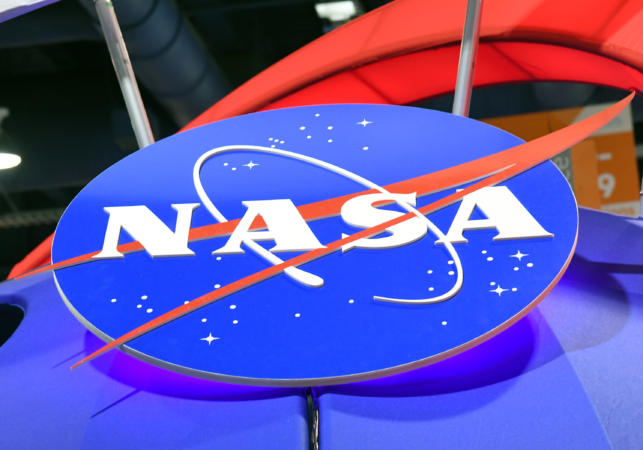This week President Trump announced that he’s adding $1.6 billion to NASA’s budget so that America can “return to space in a big way.”
While more investment in science and space exploration is a good thing, the way the administration plans to go about doing it is raising some concern.
On Monday, the administration proposed taking $1.9 billion in Pell Grant surplus dollars to fund a number of different budget priorities, one of which was a fresh jolt of cash for NASA so that the US can return humans to the moon by 2024. The original deadline was 2028.
NASA’s budget for 2019 was already at $21.5 billion and this proposal would add $1.6 billion to their 2020 budget. Originally, the president wanted to cut spending for NASA by $500 million.
The extra money will also go towards building the Orion capsule, and developing the Space Launch System, the rocket being produced by Boeing that would be used in the moon mission, which we learned this week will be called Artemis, named after the goddess of the moon and sister of Apollo. NASA says the mission would send the first woman to the moon.
NASA administrator Jim Bridenstine called the funding a “down payment” and said more money would be needed over the years to complete the mission.
https://twitter.com/JimBridenstine/status/1128060585113980928
The Pell Grant helps send low income students to college and 72 percent of African Americans in higher education take advantage of it, according to the National Center for Education Statistics.
While the potential funding boost and forthcoming mission from NASA are promising, some in the science community say that funding a moon mission with dollars from a program that sends poor students to college may not be the best way to go.
Chanda Prescod-Weinstein is an Assistant Professor of Physics and Astronomy and Core Faculty in Women’s Studies at the University of New Hampshire. She says that the wider science community should speak out against the funding proposal.
“The Trump administration wants the general public to believe that this move is a positive development for the planetary science community and planetary scientists need to refute this by speaking for themselves, rather than letting politicians speak for them” Prescod-Weinstein told AfroTech.
The Pell Grant program has a total surplus of about $9 billion and has seen a decline in enrollment since 2011. Prescod-Weinstein, who was a recipient of the program herself while attending Harvard College to receive her degree in Physics and Astronomy and Astrophysics, says student aid should be increased, not slashed, especially since the US is in the middle of a student debt crisis.
“The math doesn’t add up. If we need more scientists, we need to make it easier to access a scientific education” she said. “Right now, college tuition is skyrocketing with no end in sight. Long term missions in space require multigenerational workforce planning. Anyone who really cares about NASA’s future would be thinking seriously about using Pell Grant’s surplus to expand the program, not raiding it for other programs.”
Congress still has to approve the budget request from the president, which could be a tough thing to persuade members to do. According to Ars Technica, Congress is concerned that the budget proposal takes too much money away from domestic spending and could be politically motivated, since the mission would happen at the end of a potential second term for President Trump.
Most STEM advocates would agree that new funding for NASA is a good thing, and under different circumstances, this would be something that would be celebrated among scientists everywhere. But Prescod-Weinstein doesn’t think scientific advancements should come at the cost of inclusion.
“More funding for science is a good thing if that science will help our ecosystems thrive, including the people within them. I am all for people being curious about the universe. But when your curiosity comes at the expense of poor and marginalized families, that’s not a good thing”

